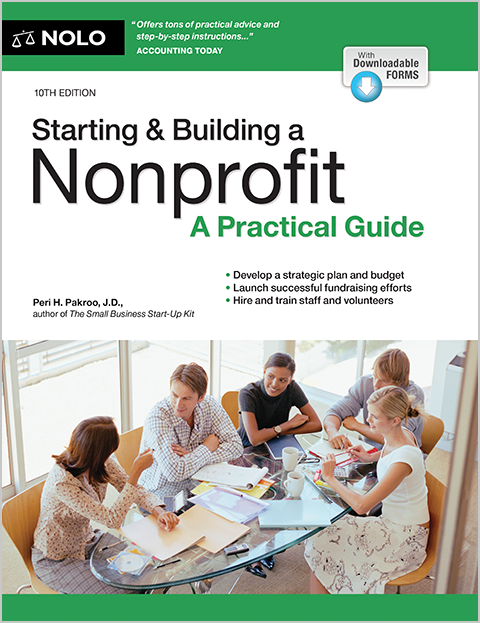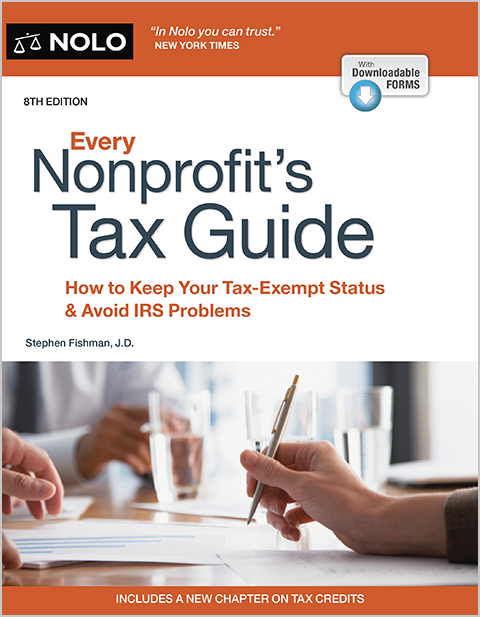Before you change your nonprofit's procedures, your board of directors should update the bylaws.
Nonprofit bylaws are a legal document that sets the rules and procedures for running the organization. As the nonprofit grows or changes, the board of directors can amend the bylaws, such as increasing the number of directors or allowing for virtual meetings. The board must verify that the amendments comply with the state's nonprofit laws and the organization's procedures.
Depending on the type of amendment, the law might require the nonprofit to report the update to state agencies, the IRS, or both.
When to Update Your Bylaws
Your board of directors should regularly review the bylaws to ensure they are following the procedures outlined in the document, and to make updates as necessary. At the minimum, the board should go over the bylaws whenever your organization undergoes a major change, such as expanding to a new state or merging with another organization. It is also good practice to review the bylaws annually. Your nonprofit might plan on reviewing and updating the bylaws at the annual meeting (when the board adds and removes members and creates the strategic plan for the upcoming year).
No matter when the review occurs, the board should take the time to carefully go over the entire document. Some of the provisions your board might update include:
- the number of directors (you might want to increase them as your nonprofit grows)
- directors' term lengths and limits (you might decrease term lengths and set limits to bring in fresh ideas and perspectives, or increase term lengths to maintain board consistency)
- your nonprofit's offices (the organization might add a position such as vice president)
- your quorum requirements (the number of votes the board needs to make decisions, which might change as the number of directors grows)
- your method of notice for meetings and other updates (you might want to add email or phone, in addition to mail)
- the rules concerning virtual meetings (for instance, should you conduct them by video or just telephone), and
- for membership nonprofits, member dues and qualifications (for more information, see our article about membership nonprofits).
Review Your State's Laws
Before you amend your bylaws, review your state's nonprofit laws to ensure the updates comply. For instance, before changing the number of directors, check your state's laws regarding the minimum number of directors. Similarly, your state's nonprofit laws might dictate the minimum quorum requirements, required offices (such as president or secretary), or prohibit the same person from holding more than one office.
Draft the Amendment
Once you confirm that the change complies with state laws, you can draft the amendment. Sometimes the process is as simple as adding a new provision to the bylaws, while other changes can affect several provisions and will require you to make updates throughout your bylaws. Be sure to review the entire document to ensure that the language is consistent. If you have any question as to the legitimacy of your proposed changes, consult with an attorney who is well-versed in nonprofit law.
For example, when you change the month of your annual meeting, you will likely update only the section on meetings. In contrast, when you add an officer position and assign duties in the bylaws, you should review the sections on other officer roles (to ensure there is no overlap in duties) and the total number of directors (to see if you have enough people fill the required roles).
Review and Follow Procedures for Updates
Review your bylaws to determine the process for amendment, and confirm that your procedures comply with state law. Some of the rules you should check include:
- the number of director votes you need to pass the amendment (majority or unanimous)
- the number of member votes you need (for membership nonprofits)
- whether directors or members must receive notice of the amendment before the vote (which might be 30 days or longer)
- whether you must hold a director or member meeting to discuss the amendment, and
- whether directors or members can email or mail in their vote, or if they must cast their votes in person.
If the bylaws are silent on any of the above, check your state's nonprofit statute, and follow the minimum requirements.
Submit Amendments to Government Agencies
Depending on the amendment and your state's laws, you might need to update state agencies and the IRS. In many states, you can report your changes in your annual filing, such as your annual report. In other states, you must file a certificate of change or an amendment to your formation documents (such as your articles of incorporation). Check with your Secretary of State to determine the requirements for your organization.
You must notify the IRS when you've made a structural or operational change, which includes amendments like increasing the number of directors, adding required offices, or changing your mission statement. If you are making a non-structural change such as allowing for meeting notification by email, you likely do not need to notify the IRS. To report a change, you include the updates in your annual tax return (990). The IRS does not require a separate filing.



